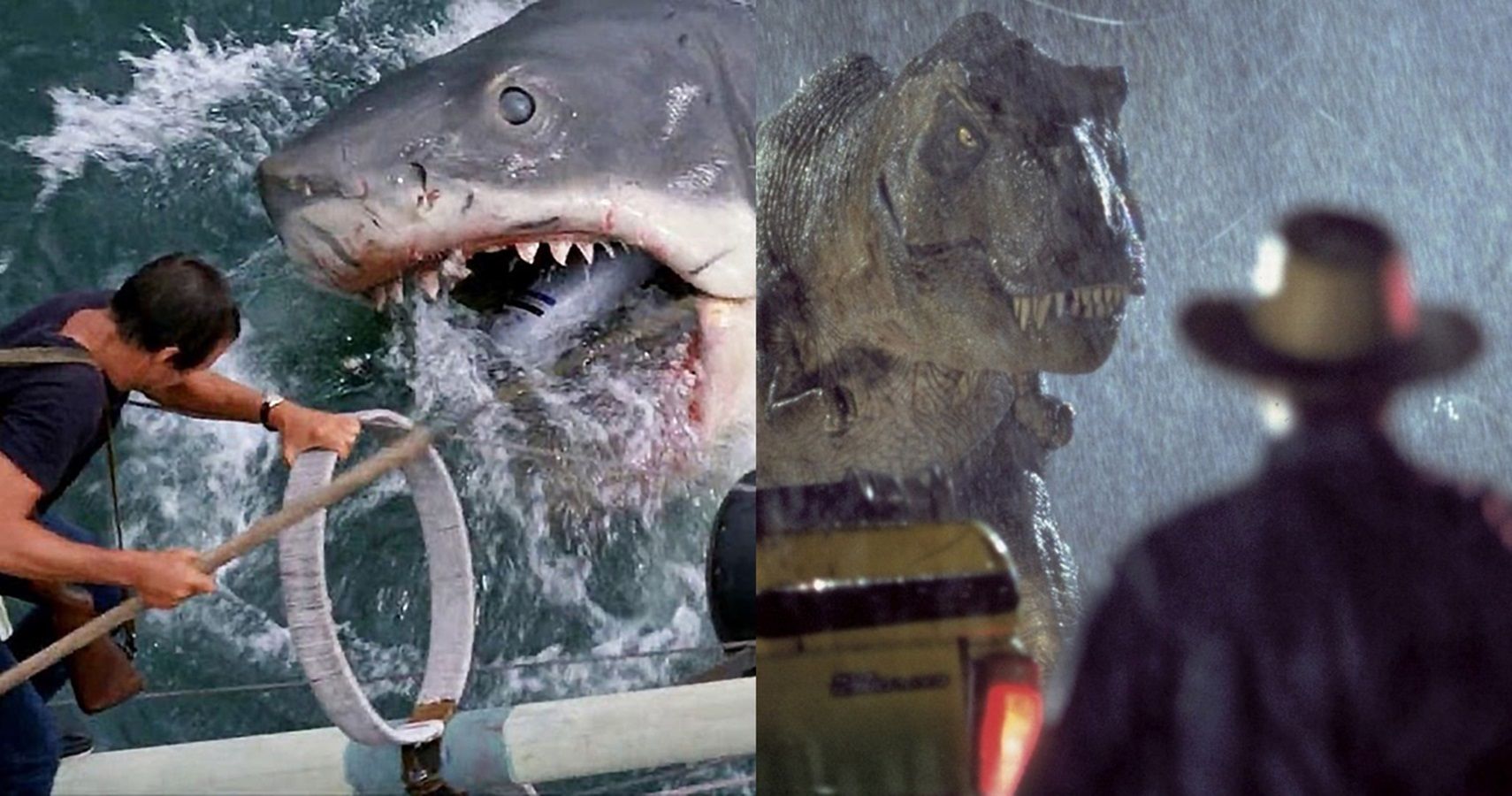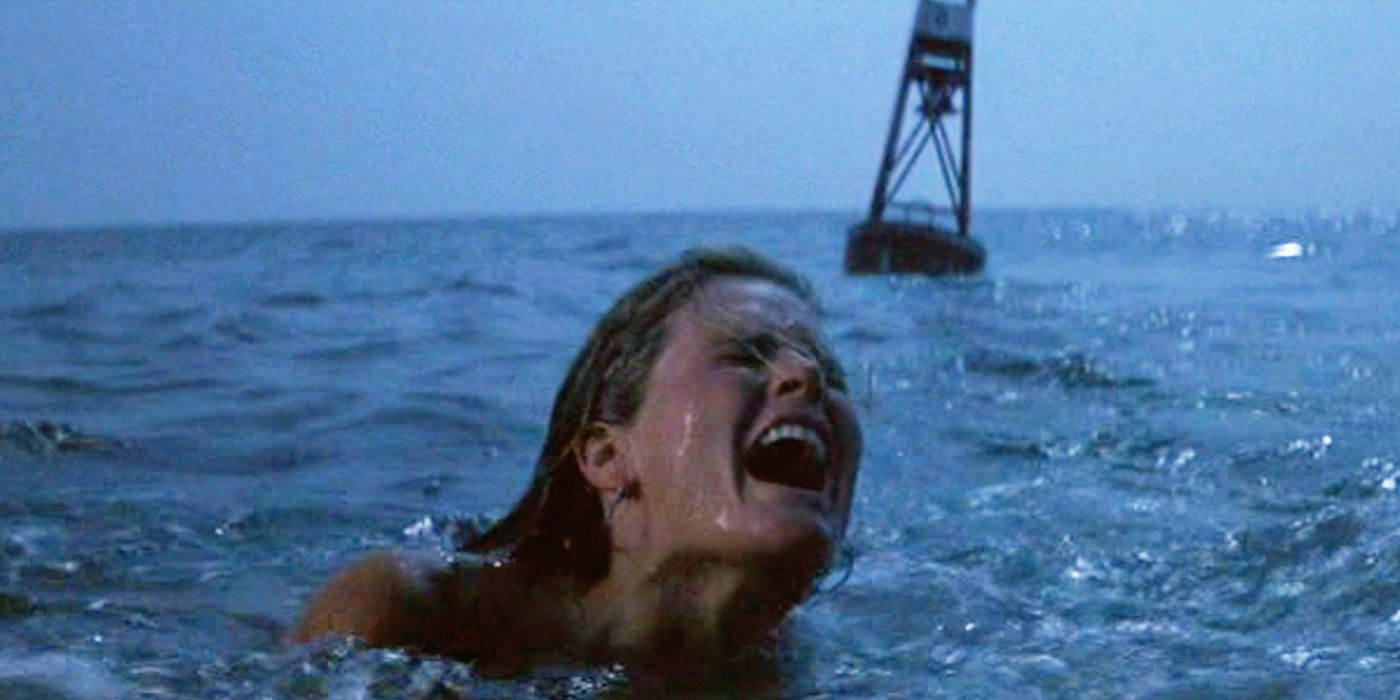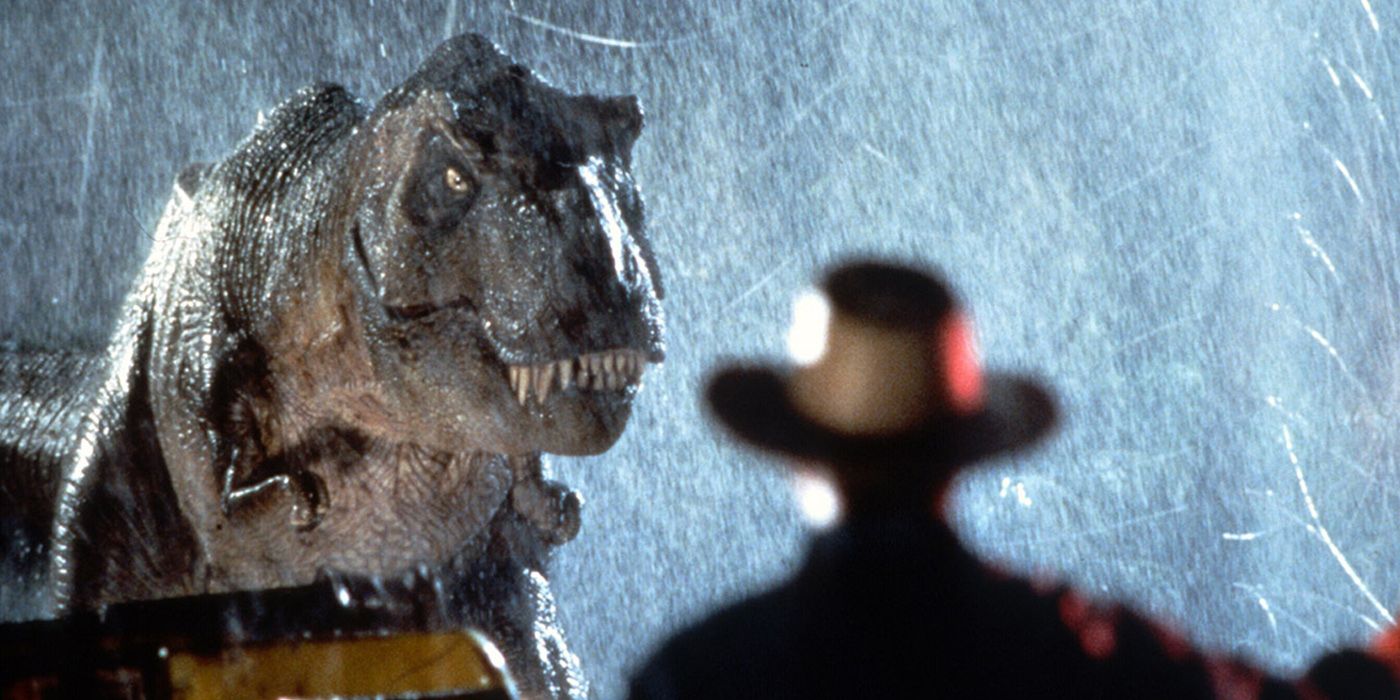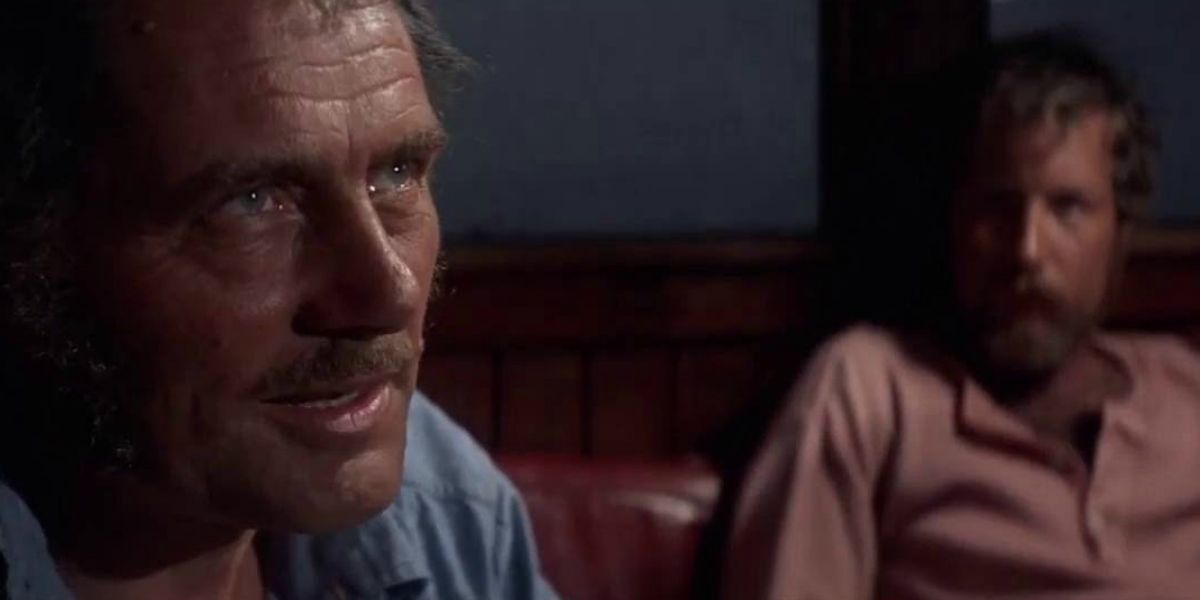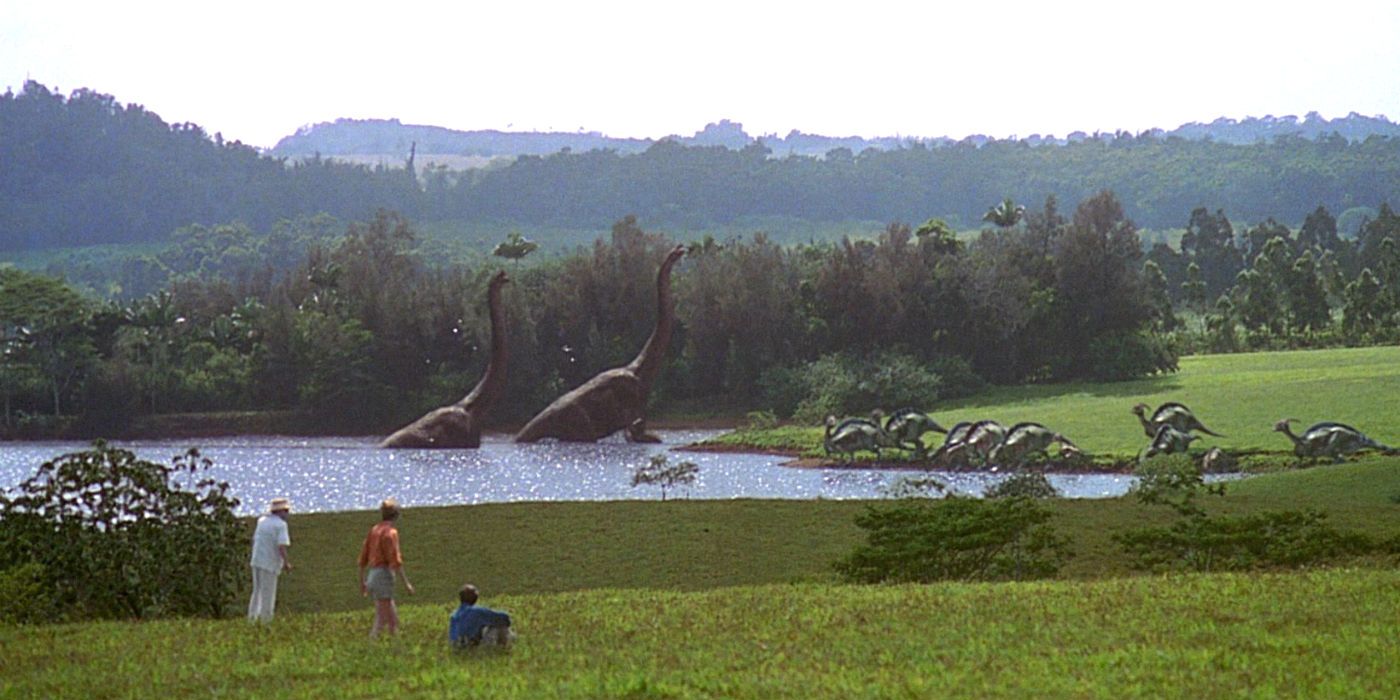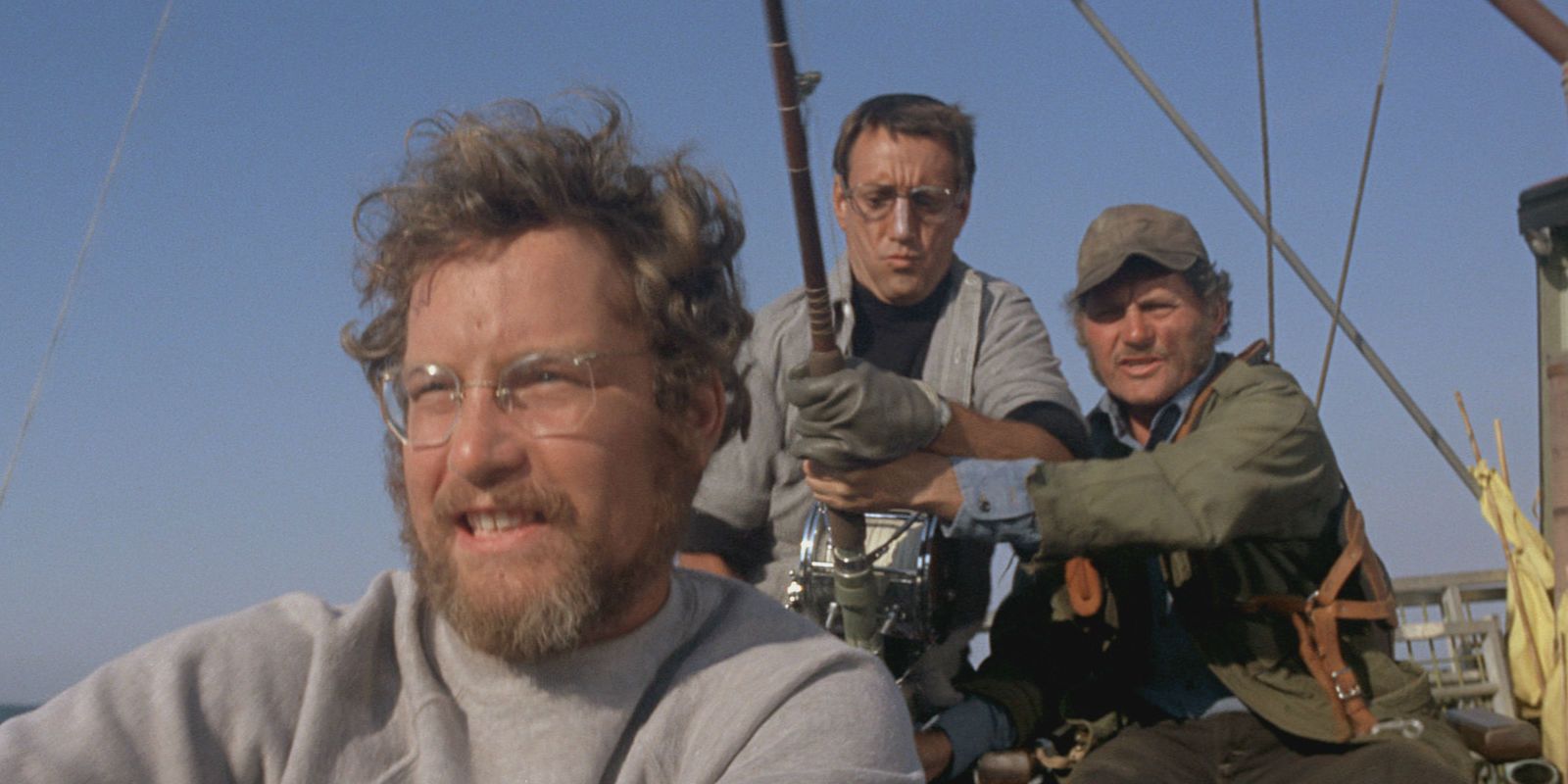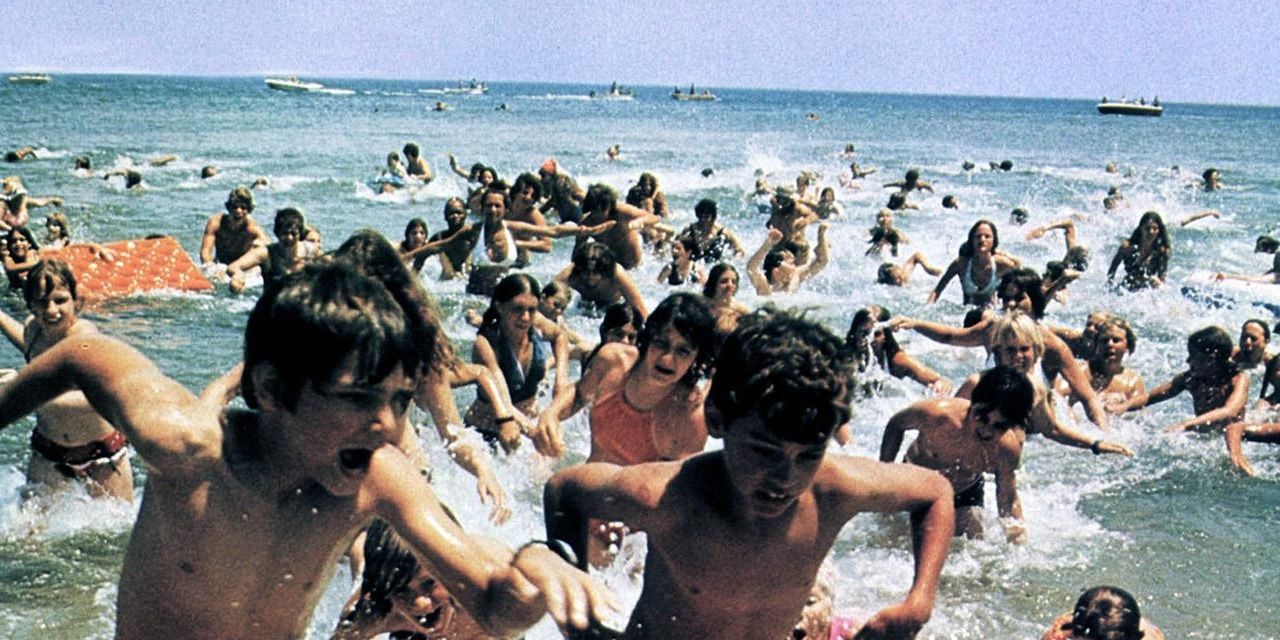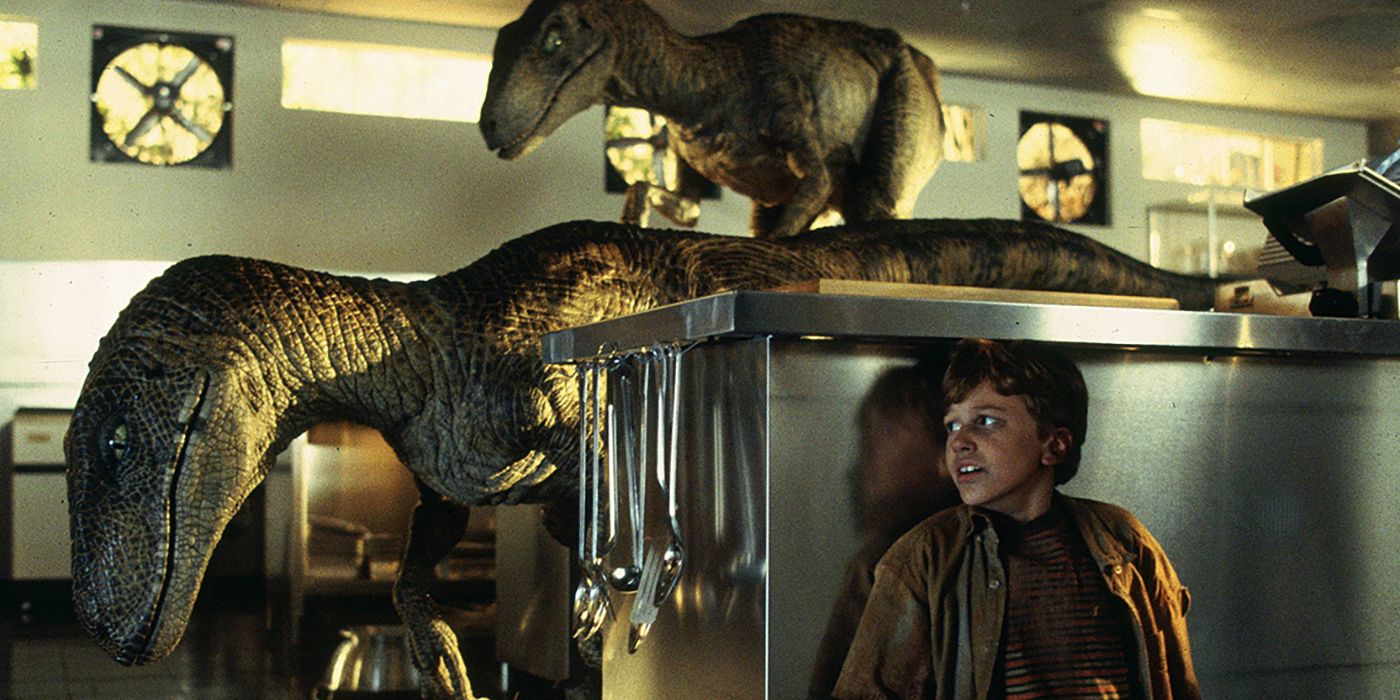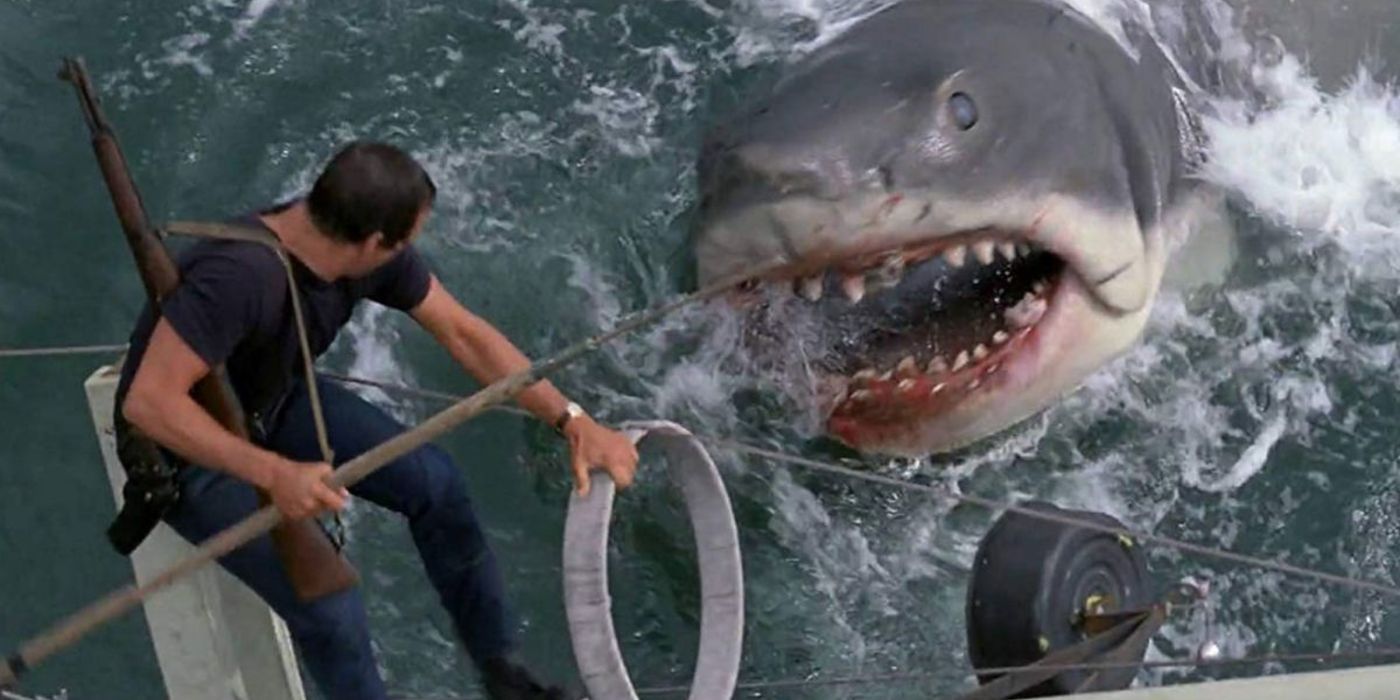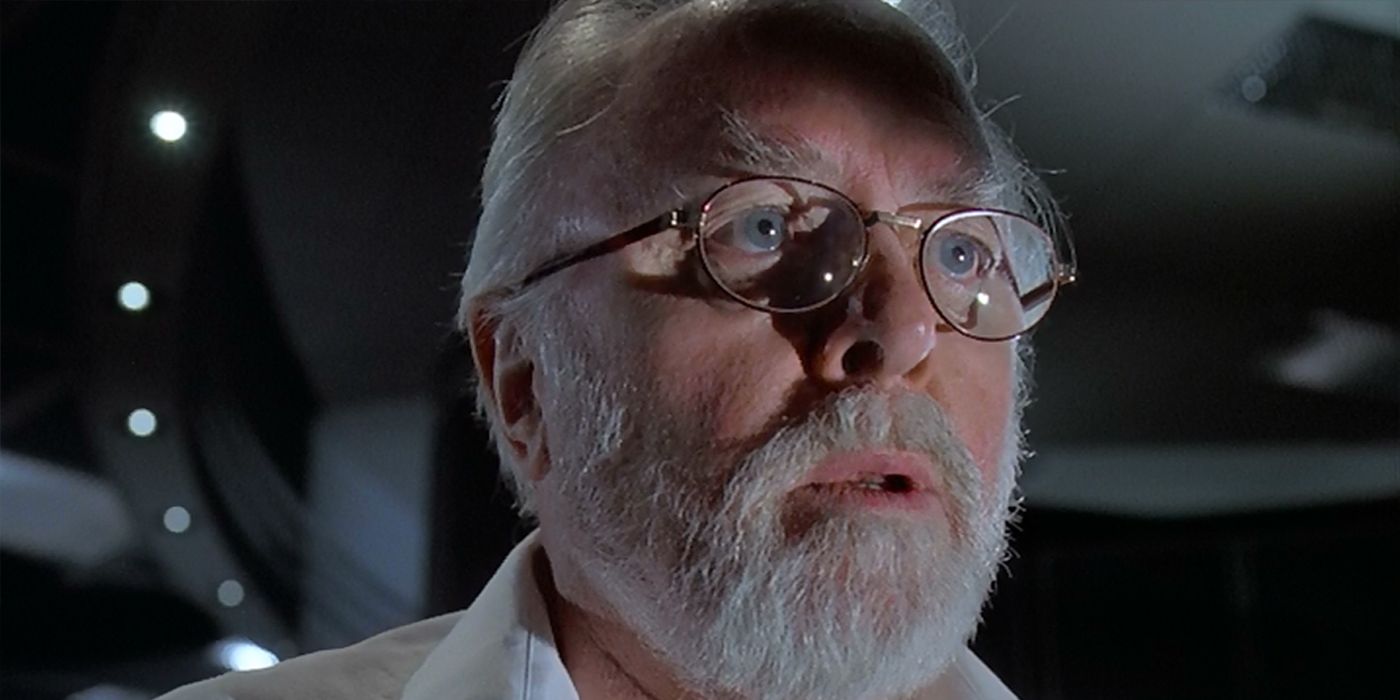Monster movies have a bad reputation because they’re often seen as an opportunity for lazy filmmakers to phone in a schlocky B-movie with an actor in a ludicrous costume jumping out at unsuspecting passersby. While a lot of monster movies do this, but it’s a detriment to the greats like Ishirō Honda and James Whale to write off the genre entirely.
Steven Spielberg has directed two of the greatest monster movies of all time: shark thriller Jaws and dino actioner Jurassic Park. While the former is slightly greater than the latter, both explore larger themes while still providing a surplus of popcorn entertainment.
Jaws Is The Best: It’s A Hitchcockian Work Of Cinematic Suspense
Suspense is a tricky thing to pull off. Quentin Tarantino has compared it to a rubber band that a filmmaker stretches for as far as it’ll hold. It’s all about having the instincts to cut in the right places and leave just enough information in the frame to suggest what’s happening outside the frame.
Alfred Hitchcock is the undisputed master of cinematic suspense. Very few directors hold a candle to his command of the form. But Spielberg’s use of cross-cutting, creative framing, and shark stand-ins like buoys to build suspense in Jaws is truly masterful. Hitchcock would’ve been proud.
Jurassic Park Is A Close Second: The T. Rex Attack Is Unforgettable
Steven Spielberg is the reason that, every summer, studios fill multiplexes with high-concept blockbusters featuring a handful of explosive set pieces. Some would say he ruined cinema by doing this, but it wasn’t his intention; Hollywood just learned all the wrong lessons from his movies’ success.
While superhero movies attempt to top each other’s destructive mayhem each year with diminishing returns, the T. Rex attack from Jurassic Park remains one of the most breathtaking set pieces in blockbuster history.
Jaws Is The Best: The Calm Before The Storm
Throughout the first and second acts of Jaws, the audience and the characters are gradually prepared for an intense showdown with the shark. But right before that, the movie has a calm-before-the-storm scene.
The guys sit around the Orca, drinking, trading stories, and comparing gruesome shark-related injuries. This scene is as perfect as they come, bringing the trio’s character development to a head and setting up the action-packed finale.
Jurassic Park Is A Close Second: The Visual Effects Were Groundbreaking
After the groundwork was laid by Terminator 2, Jurassic Park knocked audiences’ socks off with revolutionary computer-generated visual effects. The look of awe on Alan Grant and Ellie Sattler’s faces as they gaze upon the Brachiosaurus reflects the look of awe on the faces of moviegoers in 1993.
And what’s even better is that, unlike a lot of primitive effects from the early days of CGI, the VFX in Jurassic Park hold up surprisingly well today.
Jaws Is The Best: It’s Not Really About The Shark
One of the biggest mistakes made by the slew of Jaws rip-offs that followed Spielberg’s masterpiece is that they focus too much on the shark. The shark makes as many appearances as possible, while the human characters are one-dimensional and boring.
Part of what made Jaws so great is that it’s not really about the shark. The shark is just a plot device to get three very different guys — everyman cop Brody, mild-mannered scientist Hooper, and hard-as-nails shark hunter Quint — on a boat together, where their tensions start to simmer.
Jurassic Park Is A Close Second: Nature Wins In The End
The original script for Jurassic Park didn’t have an action-packed finale. Some crew members were concerned about this, mentioned it to Spielberg, and the ending where the T. Rex fights the Velociraptors was added.
In addition to giving the movie an awesome climax, it nicely ties up the theme that nature will always win against humanity — or, in other words, life...uh...uh...finds a way.
Jaws Is The Best: John Williams’ Theme Is Chilling On Its Own
John Williams’ iconic theme from Jaws is chilling on its own, without the visual accompaniment that comes with it. Spielberg hardly needs to show the shark because the rising tension of Williams’ deceptively simplistic theme suggests its terrifying presence.
When Williams first played the theme for Spielberg, Spielberg thought he was joking. But one look at the movie’s opening credits proves the effectiveness of Williams’ two-note expression.
Jurassic Park Is A Close Second: The Velociraptor Scene In The Kitchen Is A Masterclass In Tension
The scene from Jurassic Park in which Lex and Tim hide from the Velociraptors in the kitchen is a masterclass in building, sustaining, and paying off tension.
The way the scene is framed, composed, and cut together is as pitch-perfect as any of cinema’s great suspense sequences, from Psycho’s shower murder to The Good, the Bad, and the Ugly’s climactic standoff.
Jaws Is The Best: The Shark Has Haunted Audiences For Decades With Just Four Minutes Of Screen Time
Audiences have been haunted by the shark in Jaws for 45 years. Some moviegoers in 1975 swore off ever going in the ocean again, fearing that a 25-foot great white would be lurking beneath the surface.
The shark is one of the most unforgettable monsters in movie history, and yet it only appears on-screen for four minutes. What makes a monster movie work is not the monster itself, but the anticipation of it.
Jurassic Park Is A Close Second: The Real Monster Is Humanity
At its core, Jurassic Park is a Frankenstein story. It’s about a man playing God and the ethics of scientific progress. Ian Malcolm sums it up best: “Your scientists were so preoccupied with whether or not they could, they didn’t stop to think if they should.”
The dinosaurs aren’t evil; they’re just introduced into an environment where they don’t belong by unnatural means. The real monster in Jurassic Park is humanity.

